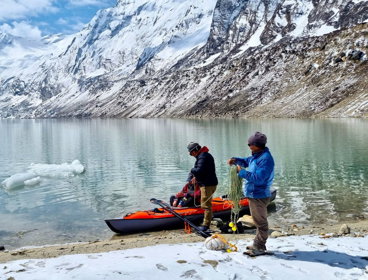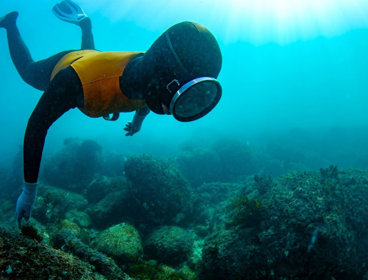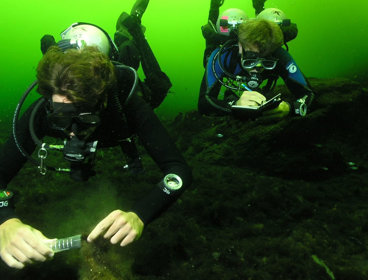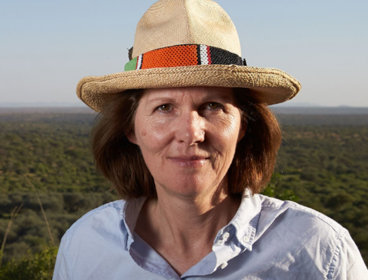Sharing new knowledge and understanding is a key element of geographical exploration. There are many ways that this can be done – from lectures and workshops to visual storytelling through social media, photography, video and much more. But it is the written record – traditionally in the form of a report filed after you return from the field – that is likely to provide the most enduring evidence of your achievements.
The Royal Geographical Society’s Expeditions Database is home to some 6,500+ printed or written expedition reports from 1965 to the present day, the majority of which have been digitised. We also hold an extraordinary collection of accounts from other historical expeditions spanning many centuries, which are available for public consultation in the Foyle Reading Room.
Producing a report is a requirement of many grant-giving organisations, including the Society, but there are likely to be many others who you want to share your findings with. Draw up a list.
In most cases it’s appropriate to produce one comprehensive report, ideally within a year of your return. Different audiences may require different forms of reports, however; for example, one summary report for funders, and a full scientific report for those who can benefit from your research.
If post-fieldwork identification, analysis or laboratory work is needed, your results may not be available until much later. In the interim you can produce a preliminary report recording the research you carried out, and follow it with full findings later.
Where English is not the first language, your findings will be much more accessible and effective if you publish a version in the language(s) of your host country and one version in English.
Report contents: what to include
Cover and title page
An attractive cover will make a good first impression and make the report more tempting to read. The title page information can be included on the front cover or as a separate first page:
- Title: The title is immediately informative if it includes the name of the institution organising the expedition, the country visited (and possibly the area) and the year of the expedition, e.g. “University of Wales Svalbard Glacier Survey 2025: Final Report”.
- Location, dates in the field and participating organisations: These should be given as the subtitle, if they are not already in the main title.
- Aim: If the expedition’s work is not already apparent on the front cover, state the overall aim, summarised in a short sentence (say 10–15 words).
- Author(s) and/or editor(s).
- Contact: With address, email and website for readers wanting to find out more or planning their own expeditions to the same area may well want to make contact.
- Year: Include the month/year in which the report was published.
Contents page
A list of contents, with section titles, subtitles and page numbers, is invaluable. It will also probably avoid the need for an index. The contents list is usually on a page of its own.
Abstract or summary
This is extremely useful for those who have time only to glance through the report and for anybody needing a summary. The abstract should be around 200 words (one or two paragraphs), written very clearly, summarising the report with a statement of the expedition’s aims, what was undertaken and what was achieved. If plans changed (e.g. for political or security reasons), or progress was different to that expected, give brief details here.
It is useful (and courteous) to translate the summary into the language(s) of the host country. If your expedition makes findings or recommendations that may be useful to non-English speakers in your host country, consider translating the whole report.
Introduction and map
Provide background information on the expedition. How did it come about? What were the main issues involved? Who were the key partners? What was its motivation? And what were the expectations?
For the reader, this puts the rest of the report in context, and is matched at the end by the conclusions.
This is also a good place to include a location map and a general map of the area. More detailed maps can go into relevant sections of the report.
Expedition members
List the expedition members, giving brief details of their relevant experience (e.g. academic status, qualifications, climbing experience) and their main roles on the project.
Fieldwork and research
For research expeditions, this will be the most important part of the report with an account of the results that justify all the expedition’s logistic and scientific efforts. If several projects were carried out, it is probably clearest to present these separately. At the end of all of them, give an integrated set of conclusions.
Consider following the format of a scientific paper: starting with the context and research questions studied; describing your methods in a way that would allow, in principle, the project to be repeated; presenting the results; and finishing with a discussion and conclusions. This format can also be adapted to almost any type of expedition, not just scientific ones.
Background, planning and aims
- What was the background to the project?
- Who helped you put the project together?
- What was the aim?
- Which area was chosen for study, how and why?
Methods: fieldwork and follow-up
- Give details of field methods: sampling, collecting, observing, recording, etc.
- What difficulties or useful innovations did you encounter?
- Did you have to modify your project or techniques in the field? Why and how?
- Did any opportunistic projects arise?
- How did you process and analyse your field data?
Results
- Present and describe the results arising from the fieldwork and analysis, with tables, graphs and images as appropriate.
- Indicate where large sets of “raw” data can be found with a summary printed in the report.
- Report other incidental observations, e.g. climate, bird sightings.
Discussions and conclusions
- What did the results show? Were your original questions answered?
- How do your results compare with other work in the same or other regions? How do they fit into a wider context?
- What are the key conclusions? These might relate to the results themselves, to the methods or to other achievements of the expedition.
- Provide accurate, detailed and specific conclusions, avoiding general inferences, interpretations and recommendations (tempting though they are!).
- What were the major limitations of the project? What caveats apply to the conclusions?
- Expeditions often return with more questions and ideas than they started with: what follow-up work might be useful? Could any studies be continued, e.g. monitoring or conservation projects?
Adventurous activities
Many expeditions’ achievements are adventurous or sporting challenges, such as mountaineering, canoeing, caving or trekking, and some research expeditions will also have an adventure element. For these expeditions, the report is important both as a record of their achievements and to help others following them. Give details of the area, the environment, your aim and objectives, and the planning and achievements. The full account of the expedition’s day-to-day activities and accomplishments often takes the form of a diary or log.
Administration and logistics
This section should give insight into the process and problems of planning and executing the project. It will be of great practical help, particularly to those undertaking similar projects in the future. Include a note of any unforeseen difficulties and how they were overcome.
Some topics that you might wish to include require no more than one or two paragraphs. Very detailed information (such as packing lists or financial details) can be put into appendices to avoid cluttering the main text.
- Destination area: The aim here is not to write a comprehensive guide to the area that you visited. Instead, give details that could help others but that are not found in guidebooks and previous expedition reports. The bibliography can refer to other information sources.
- Research materials and information sources: What maps, aerial photographs and satellite images did you use? Where did you obtain these and other materials? Include any particularly useful books, websites, organisations or advisers.
- Training and field-testing equipment and clothing: What form did these take, and where were they carried out? Were they effective? Was the equipment fit for purpose?
- Permission and permits: How were research permits and visas obtained? How long did the process take? Was special customs clearance needed for export or import of equipment and specimens?
- Fund-raising: What methods did you employ? Were they successful? What recommendations do you have to make? Who were your key backers?
- Finances: How did you manage your accounts? How did you transfer money to and from your destination? The expedition accounts may not have be closed when the report is written, but still summarise the income and expenditure to date. For reports being sent to funding bodies, this is essential.
- Insurance: What did you insure, with whom? Was the company helpful? Was the policy sufficient? How much did it cost? What claims were made and settled?
- Travel, transport and freighting: How did you and your equipment reach your destination? What transport was used locally? For example, mention fuel availability, accessibility, and use of porters and guides. Give details of specialist companies, such as local agents or vehicle hire.
- Food and accommodation: Did you buy food locally or bring it with you? Was it good? What water supply did you use? What accommodation arrangements did you have, both in transit and in the field?
- Communications: What forms of communication did you use in the field such as local SIM cards or satellite phones?
- Specialist equipment: Mention new ideas and techniques and any equipment that the expedition may have designed.
- Risk Assessment and Safety Management: Was your Risk Assessment and the actions to manage safety as anticipated? Were there any hazards that should be including in any future Risk Assessment? Did any problems arise to affect your plans and how did you cope with these? For example, flooding, mud slides, political instability, water quality, theft. Be honest about any near misses. Could they have been avoided? Consider publishing your Risk Assessment and Safety Management plan.
- Medical arrangements: Give details of medical personnel on the expedition, medical equipment that you took and supplies, emergency facilities and the means of contacting medical support. Describe preventive medicine, inoculation procedures, and any illnesses and treatment.
- Environmental and social impact assessment: What pre-expedition assessment was made of its impacts? Were they monitored in the field? Did any impacts result? Were they significant? What recommendations would you make for reducing impacts in future?
- Itinerary: If the expedition has been working in several sites or has been a journey, details can be given here, or included in a separate diary or log section (see below).
- Photography, sound-recordings, video and film: Permission needed; any particular problems; equipment used; what images were taken, for what purpose; where copies are held and how to obtain them.
Diary or log
For expeditions undertaking long journeys, this may form the major part of the report. For expeditions based at one site, it will probably be quite short and should be kept distinct from the research sections. Details can include: dates, distances, sites, routes, travel arrangements, and facilities such as petrol stations. Detailed maps are invaluable here.
Conclusion
The conclusion summarises the main text and makes clear the lasting contribution of the expedition. It should complement the project’s aims and objectives raised in the introduction and add any new information uncovered by the expedition process. For a reader in a hurry, this is likely to be the section looked at first, so make it as clear and helpful as possible, perhaps numbering the conclusions. Themes to include are:
- Did the expedition achieve its aim?
- What were its critical strengths and weaknesses?
- What were the key results or achievements?
- What is their wider significance and what benefit might they bring?
- What recommendations would you make?
- What supplementary projects could be done by future expeditions?
Producing a comprehensive and well-structured expedition report is crucial for sharing your team’s findings, documenting your achievements, and providing valuable insights for future endeavours. By properly identifying your audience, meticulously detailing your research, and adhering to a clear production timeline, your report will serve as an enduring record of your expedition's contributions and the lasting impacts of it.
Ultimately, an effective expedition report, whether in print or digital format, not only fulfills obligations to funders and collaborators but also preserves knowledge and inspires further exploration and research.
Acknowledgements
Remember to thank everybody, individuals and organisations, who helped before, during and after the expedition.
Appendices
These are used to develop points of detail not easily placed elsewhere in the text. For example:
- Inventory of stores and equipment: Be selective and comment on those items that require notes in the light of your experiences. Add notes on their packing, how suitable you found them, customs problems, etc. If anything you took seemed unnecessary, or if there was anything that you had wished you had taken, mention this.
- Summary of finances: Publish a full account of income and expenditure, audited if necessary.
- “Raw” field data: If large amounts of data were generated in the field, they should if possible be made available in the report, but not necessarily in the main text, e.g. animal distribution observations, plant collections or stone size measurements. Summary tables and statistics can then be used in the main text.
Address list and web links
An annotated list of useful names, addresses and websites will become a great resource for those following you.
Bibliography
List the key books, articles, websites, expedition reports, etc. that you used, highlighting the most helpful ones. Also list other publications and products from the expedition, as well as papers being prepared for publication by expedition members.
Distribution list
List where copies of the report have been lodged for reference by future expedition leaders and others, and where the report can be bought, downloaded, etc.
Production and printing
Writing the report
Bear in mind who will be reading the report and the information that you are conveying to them. Unless you are producing a technical report for an expert readership, write and design it with a general readership in mind. This process not only clarifies your own thinking, but also means that far more people will read it and find it useful.
Make sure that acronyms are fully explained and use the full name for the first occurrences. Explain any specialised procedures and terms, and keep the language as simple and concise as possible. Use suitable headings and avoid long rambling paragraphs: think of one theme per paragraph. Short sentences are better than long ones.
When the text is complete, leave it for a few days before reviewing and revising it. If possible, get an independent person to read through the text, asking them to comment on the style and perhaps the content. Finally, go through the report several times again, each time looking critically at one aspect such as logical sequence, punctuation and layout.
Design and layout
For a long document, finalise the text and figures as far as possible before starting on the final formatting and page layout. It’s tempting to do the formatting as you go along but this almost invariably leads to lots of time wasted by changing pagination and layouts as you make small edits to the text. Finalise core design elements beforehand: page size, margins, line spacing, heading/text styles, and colour use.
Think carefully about the overall design. Is it easy to read? Do chapter headings and page headings help readers know where they are in the report and encourage them to read more? Do the design and illustrations help emphasise the important aspects of the expedition’s work and expand on items in the text? Look closely at the design of other books, articles and reports; choose the layout you like best.
Check carefully for consistency, both in the design and in the text itself. This applies to features such as bibliographic references, abbreviations for units, spelling of place names, chapter names, section headings and page numbers. However you design the report, don’t forget to include page numbers. Without these it is difficult to make bibliographic references to the report and to catalogue it in a library.
Distribution
For the expedition to have the most useful impact, think carefully about who has helped you and who might benefit from having the report. Keep a record of all who have been sent a copy.
As well as your own list of collaborators, supporters, helpers and beneficiaries, a hard copy should also be sent to the Legal Deposit Office, The British Library, Boston Spa, Wetherby, West Yorkshire LS23 7BY. For information on legal deposit of publications in UK, visit the website of the Agency for Legal Deposit Library (ALDL).
RGS Expeditions Database
Examples of reports from past expeditions and field research projects can be downloaded as digital copies from the RGS Expeditions Database.
The Society welcomes both printed and digital copies of reports to include in our collections to help us share and preserve your achievements and what you have learned.
Suggested action plan and timetable for producing the expedition report
Planning is the key to producing a good report in a timely manner. It is surprising how much can be done before the expedition departs. All expeditions will of course be different, but this hypothetical timetable shows the main stages of production.
Pre-expedition
- Months 1–2: Start liaising with your colleagues and partner organisations about the how the project results will be reported, and what form these will take.
- Month 3: The expedition’s aim, team, destination and collaborators should all have all been arranged. List the main outputs you expect from the expedition. Decide what sort of report(s) will be most suitable and what it should achieve.
- Month 4: Appoint the report editor, a key member of the team, so everyone knows who has responsibility for everything to do with the report. Editor produces a timetable for the report. Draft table of contents; distribute to all partners for comments and agreement. Decide who will produce each section of the report.
- Month 5: Draft list of recipients: who and how many. Give thought to the design of the report: how many pages, page size, photographs, colour or black and white, cover design. Estimate the cost of printing and distribution: obtain estimates from printers and seek sponsorship for printing.
- Month 6: In planning your fieldwork, allocate a week at the end, before you return home, for writing the preliminary report. Assemble equipment for recording and report writing to take with you.
In the field
- On arrival: Plan a place and time to work on the preliminary report and check on local copying facilities.
- During fieldwork: Keep up to date with recording everything that might be used in the report and safely store and back-up the data in at least two places, e.g. daily log, species lists, GPS records, descriptions of methods.
- Before returning home: Write your preliminary report. Distribute it to all your contacts in the host country. Email the preliminary report to sponsors, helpers and other contacts at home and elsewhere – they will be delighted to receive a short, efficient report from the field.
Post-expedition
- Month 1: Develop and distribute your preliminary report. Update your website with news of the expedition’s progress and the preliminary report available for download.
- Months 2–3: Team members, at home and in the host country, write their sections. Prepare design and style guidelines. Prepare maps and photographs and any other illustrations. Make final arrangement with printers.
- Month 4: Deadline for each section. Editing and layout.
- Month 5: Last sections, e.g. conclusions, abstract, bibliography, acknowledgements, finances. Final edits – and spell-check! Careful proofreading by editor and authors; if appropriate ask an adviser to comment.
- Month 6: Send everything to be printed. Prepare packaging, labels. Prepare covering letters, presenting the report and possibly inviting comment, suggestions and participation for further development of the project.
- Month 7: Dispatch the reports in printed and/or digital format. Make arrangements for storing extra copies, sending them out if requested, and responding to feedback from the report.
- Month 8: Almost ready for the next expedition!
Inspired to get your expedition off the ground? Learn all about expedition planning at the annual RGS Explore Weekend.
Stay updated
Be the first to hear when new resources are launched by subscribing to our monthly exploration community newsletter. You'll also receive relevant news and events from the Society.
- You will be asked to create a free Society account if you haven't already done so.
- Once logged in, navigate to My preferences and select News and events about fieldwork and expeditions.





